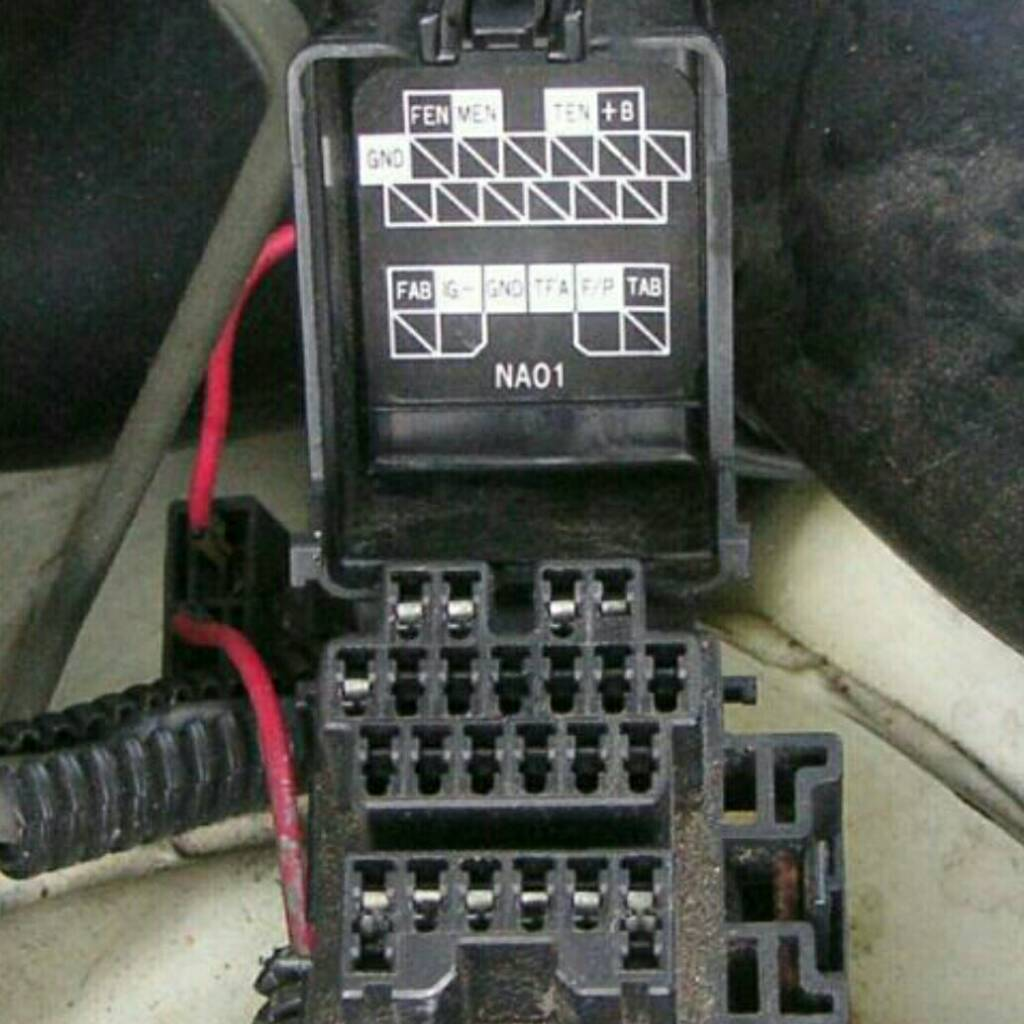NA Miata Error Code Guide – ECU Troubleshooting
The Mazda MX-5 Miata is one of the most beloved sports cars ever produced, and maintaining its performance is essential for keeping it running smoothly. One of the most efficient ways to identify engine issues in the first-generation NA Miata (1990-1995) is by checking the stored error codes in its

The Mazda MX-5 Miata is one of the most beloved sports cars ever produced, and maintaining its performance is essential for keeping it running smoothly. One of the most efficient ways to identify engine issues in the first-generation NA Miata (1990-1995) is by checking the stored error codes in its Engine Control Unit (ECU).
Pre-1996 Miatas are equipped with an OBD-I system, unlike newer models that use OBD-II, making the diagnostic process slightly different. This guide will walk you through the steps of checking and interpreting error codes for NA Miatas, helping you pinpoint potential problems and keeping your car in top shape.
Why Checking Error Codes Is Important
The ECU in your Miata continuously monitors various parameters like air intake, fuel mixture, spark timing, and engine temperature. When a component is malfunctioning or out of its normal operating range, the ECU records an error code that corresponds to the issue. These codes can provide you with critical insights into what’s going wrong under the hood, allowing for faster and more accurate repairs.
By checking these codes, you avoid the guesswork often associated with diagnosing engine issues, and you can catch small problems before they become costly repairs.
How to Access the Error Codes in Your NA Miata
Since the NA Miata does not have a standard OBD-II port, accessing the error codes requires bridging specific terminals in the car’s diagnostic port. Follow these steps to retrieve the codes from your ECU:
Locate the Diagnostic Connector
Open the hood and locate the diagnostic connector box, which is mounted near the driver’s side shock tower under the hood. It’s a small black box labeled “DIAGNOSTICS” or “DIAG” that contains a series of pins and a corresponding legend on the inside of the lid.

Prepare Your Tools
You will need a simple jumper wire or an unfolded paperclip to connect the correct terminals inside the diagnostic box. A paperclip works perfectly for this task due to its thin, flexible design.
Bridge the TEN and GND Terminals
After opening the diagnostic connector cover, consult the diagram printed inside the lid to identify the “TEN” (Test) and “GND” (Ground) terminals. These are the terminals we’ll need to bridge to access the codes.
Insert one end of the paperclip into the terminal labeled “TEN” and the other end into the “GND” terminal. This creates a temporary jumper wire that allows the ECU to send the error codes to the dashboard check engine light.

Turn the Ignition to the ON Position
With the jumper wire in place, return to the driver’s seat and turn the ignition key to the “ON” position without starting the engine. This powers up the ECU and activates the diagnostic mode. The check engine light on the dashboard will start to flash in a specific sequence, providing the error codes. If there are no codes stored, the check engine light will simply turn off after a few seconds.
Count the Flashes
The check engine light will flash in long and short intervals. A long flash indicates the “tens” place of the error code, and a short flash indicates the “ones” place. For example:
Two long flashes followed by three short flashes = Error Code 23.
If there are multiple codes stored, the check engine light will pause briefly between each code.

Error Codes for 1990-1993 Miata Models
Code 1: Ignition Pulse (No IGF signal)
The ECU isn’t receiving a signal from the ignition circuit, indicating a potential issue with the ignition coil or ignitor.
Code 2: No NE Signal
This points to a missing crankshaft position signal, potentially caused by a faulty crank angle sensor.
Code 3: No G Signal
This refers to an issue with the camshaft position sensor, indicating that the ECU cannot detect the position of the camshaft.
Code 8: Airflow Meter Malfunction
The airflow meter, responsible for measuring the amount of air entering the engine, is malfunctioning or has failed.
Code 9: Coolant Temperature Sensor Failure
This indicates a failure in the water thermistor, preventing the ECU from accurately monitoring the engine’s coolant temperature.
Code 10: Intake Air Thermistor in the Airflow Meter
The thermistor that measures intake air temperature has failed, leading to inaccurate air-fuel mixture calculations.
Code 12: Throttle Position Sensor (TPS) Open or Short Circuit
The throttle position sensor is malfunctioning, causing improper throttle response and potentially affecting fuel delivery.
Code 14: Atmospheric Pressure Sensor (inside the ECU)
The atmospheric pressure sensor inside the ECU is faulty, which can affect the fuel mixture at varying altitudes.
Code 15/17: Oxygen Sensor Malfunction
The oxygen sensor isn’t providing accurate feedback to the ECU, leading to incorrect air-fuel mixture adjustments.
Code 26: Evap Canister Purge Solenoid Valve Failure
This indicates a problem with the evap system, specifically the solenoid valve responsible for controlling vapor release.
Code 35: Idle Speed Control (ISC) Valve Failure
The idle speed control valve is malfunctioning, which can lead to rough or inconsistent idling.
Error Codes for 1994-1995 Miata Models:
The error codes for the 1994-1995 models are slightly different due to updates in the ECU. Here’s a list of common error codes for these later models:
Code 1: IGF Signal Failure
Similar to the earlier model years, this points to an issue with the ignition pulse.
Code 3: SGT Signal Failure
This refers to an issue with the camshaft position signal.
Code 8: Mass Airflow Sensor Malfunction
The mass airflow sensor is either sending incorrect data or has failed completely, causing incorrect air-fuel ratio calculations.
Code 9: Coolant Temperature Sensor Failure
The coolant temperature sensor is malfunctioning, preventing the ECU from monitoring engine temperature accurately.
Code 10: Intake Air Temperature Sensor Malfunction
The intake air temperature sensor is malfunctioning, leading to inaccurate calculations for the air-fuel ratio.
Code 12: Throttle Position Sensor Circuit Issue
The throttle position sensor is either disconnected, short-circuited, or sending improper readings.
Code 15/17: Oxygen Sensor Circuit Failure
Similar to earlier models, this points to a malfunction in the oxygen sensor circuit, leading to improper air-fuel ratio adjustments.
Code 26: Evap Canister Purge Solenoid Valve Issue
The evap system is failing to purge vapors properly due to a solenoid valve malfunction.
Code 34: Idle Speed Control (ISC) Valve Malfunction
The ISC valve is faulty, leading to irregular idling or stalling.
What to Do After Identifying the Error Code
Once you’ve identified the error code(s) using the check engine light, refer to the corresponding issue from the lists above. Depending on the problem, here are some common next steps:
- Inspect Components: Visually inspect the sensor or system indicated by the error code. Look for loose wires, corrosion, or obvious signs of damage.
- Replace Sensors: If a sensor is malfunctioning, replacing it may resolve the issue. Be sure to use OEM or high-quality aftermarket parts.
- Reset the ECU: After addressing the issue, you can clear the stored error codes by disconnecting the car’s battery for a few minutes.
Diagnosing issues in your NA Miata using error codes is a straightforward process that requires minimal tools but provides valuable insights into your car’s health. By checking these codes, you can prevent small issues from escalating into larger problems, ensuring your Miata continues to deliver peak performance.
For a more detailed explanation of each code and recommended repairs, refer to your Miata’s factory service manual. As always, keep enjoying the road and happy driving!




